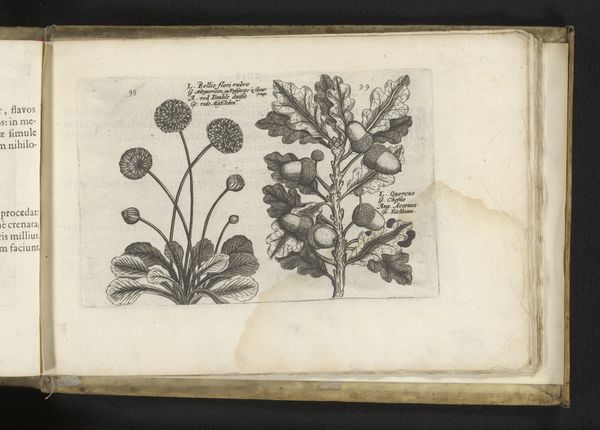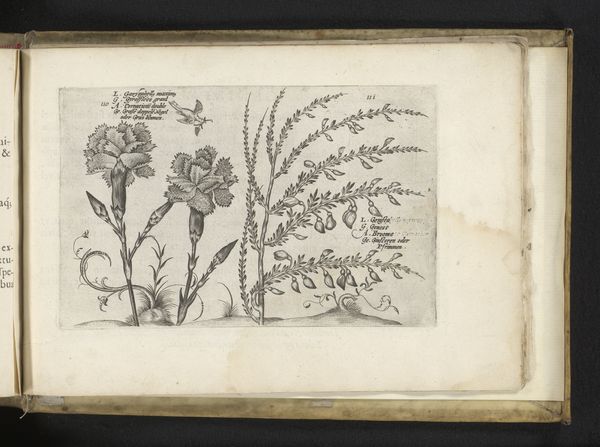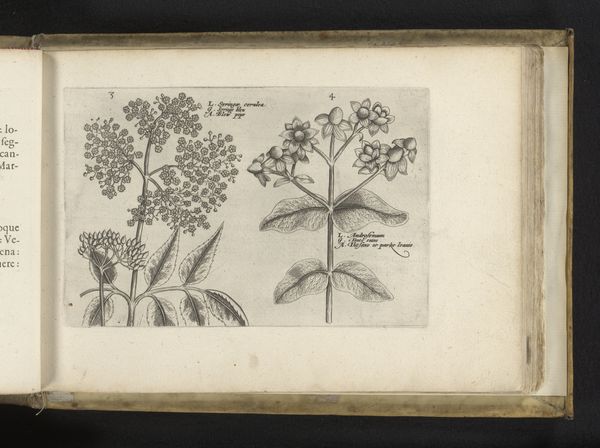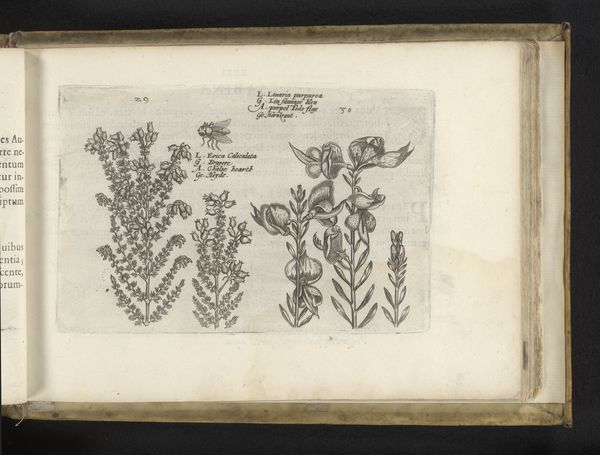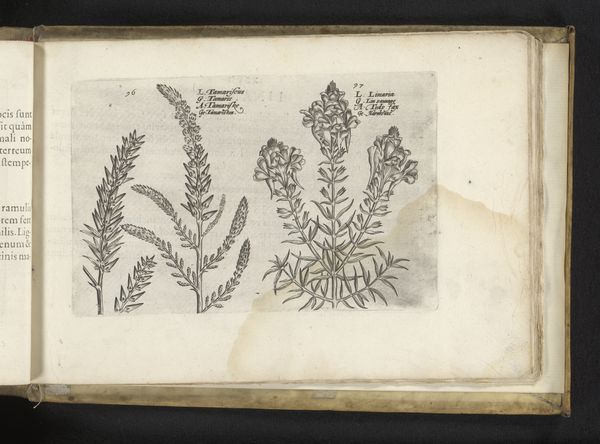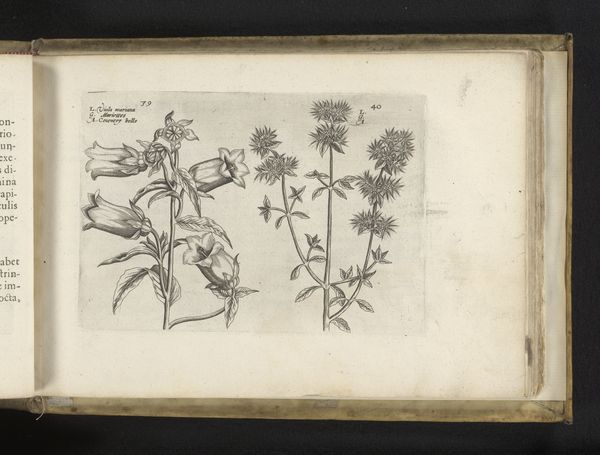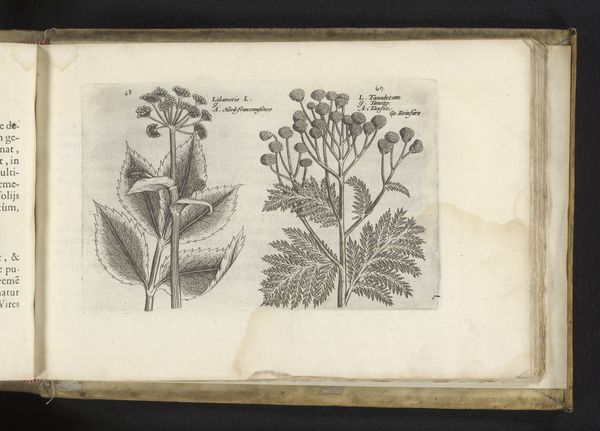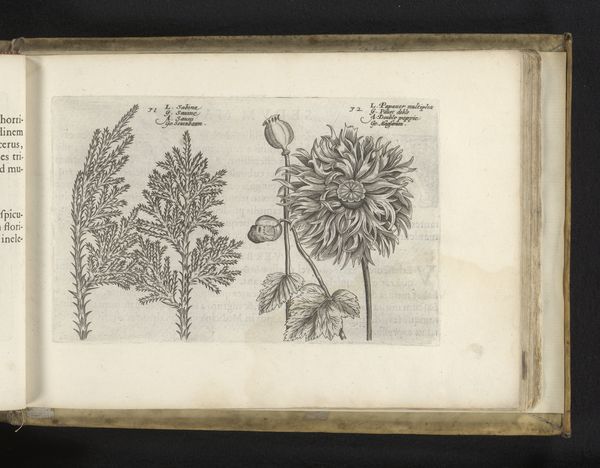
drawing, print, paper, engraving
#
drawing
# print
#
figuration
#
paper
#
11_renaissance
#
line
#
northern-renaissance
#
engraving
Dimensions: height 130 mm, width 196 mm
Copyright: Rijks Museum: Open Domain
Crispijn van de Passe the Younger made this print of Vetch and Yarrow using engraving, sometime in the 17th century. Engraving is an intaglio process, meaning the image is incised into a surface, in this case, a metal plate. The lines you see were carefully cut by hand, using a tool called a burin. Ink would have been applied to the plate, then wiped away, remaining only in the carved grooves. High pressure is then applied to transfer the ink to paper. The qualities of the material—the smooth metal, the sharp burin, the absorbent paper—all contribute to the print’s crisp lines and delicate details. This was a highly skilled and labor-intensive process, requiring years of training and practice. Van de Passe and other printmakers like him were essential to disseminating information and imagery in early modern Europe, effectively the social media of their day. So, next time you see a print, consider not only the image it depicts but also the intricate process and skilled labor that brought it into being.
Comments
No comments
Be the first to comment and join the conversation on the ultimate creative platform.
